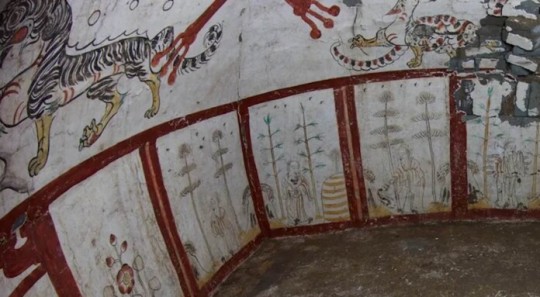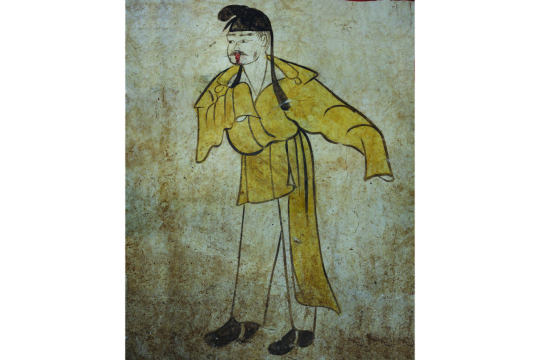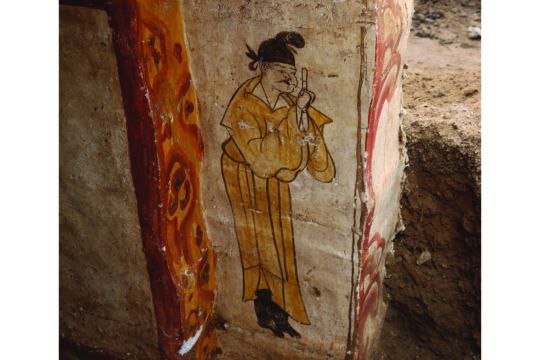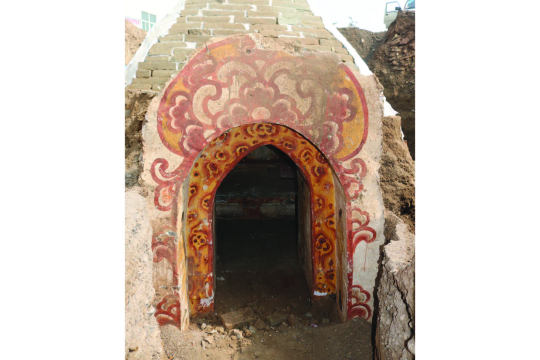#Central Michigan University
Explore tagged Tumblr posts
Text

(https://www.sjanickiphoto.com/2023-2024-College-Wrestling/2024-02-23-Michigan-State-Vs-Central-Michigan/125-157lbs-Michigan-State-Vs-Central-Michigan-22324/i-Pxjhw2J)
14 notes
·
View notes
Text
if you switched out two feit smart lightbulbs at the menards in mt pleasant mi count your fucking days i will be coming to steal your kneecaps

#they’re so identical with subtle differences i’m actually kinda low key impressed#but trying to figure this shit out after a hell of a week and day#well it sent me into a mental a breakdown tbqh#like i spent almost $20 for this#and i got fucked over#like i get stealing from capitalist corporations and shit but why do we gotta do things that fuck over other customers?#like just take the lightbulbs don’t replace them??#they still got my money in the end#i mean i’m gonna get a refund now but still 😭#goddamn college towns 😭 full of animals#central michigan university#michigan#cmu#mine#ok to rb
0 notes
Text
My Day with Bob Evans
This incredibly flattering and beautifully composed photograph was taken this morning after breakfast at our beloved Bob Evans restaurant, this one just north of Lansing in DeWitt. We were driving south on US127 from Central Michigan University in Mt. Pleasant where, the night before, I’d given a long anticipated talk to the local student Planned Parenthood chapter about the illegal/unsafe…

View On WordPress
#Bob Evans#Central Michigan University#Hastings#illegal abortion#Michigan#planned parenthood#Riverside Cemetery#St. Julian&039;s Winery#unsafe abortion
0 notes
Text
0 notes
Text
Find Your Ideal Residence near CMU Student Apartments
Situated near Central Michigan University and within walking distance from Kelly/Shorts Stadium and local retail, University Meadows provides spacious apartments in Mt. Pleasant with a complete lifestyle. Discover the ultimate student living experience with them, and get top-quality student apartments.
0 notes
Text
Finding The Best Off-Campus Housing At Central Michigan University Housing Options
Hunting for off-campus student housing in Mount Pleasant near Central Michigan University, offering spacious apartments and a complete lifestyle? End your search at The Reserve at Mt. Pleasant. It is a top-quality student housing serving Central Michigan University, just minutes from campus. Apartment Features We Offer: 2 and 3-bedroom floorplans, Single bedrooms, all private bathrooms, Per-person contracts, and roommate matching. Community Features We Offer: Resort-style pool, Basketball, and sand volleyball courts, a Business center with complimentary printing, a Shuttle bus service to campus &, etc. You have limited time to apply with us and secure your preferred placement, and we'll waive the deposit and application fee. Apply now. If you are interested in renting an apartment of your very own while attending college, please contact The Reserve at Mt. Pleasant at https://reserve-mtpleasant.com/.
0 notes
Text
vimeo
Finding The Perfect Deal On CMU Off Campus Housing
Finding the perfect deal on Central Michigan University off campus housing can be a bit of a challenge, as the housing market in the area can be competitive. One thing you can do is start your search early. The earlier you start looking for housing, the more options you will have and the better chance you will have of finding a good deal.Another thing you can do is look for housing that is not located directly on or near the CMU campus. These properties will typically be less expensive than those located closer to campus. Contact University Meadows at www.UnivMeadows.com for more info.
0 notes
Text


Stunning Tang Dynasty Murals in a Tomb Unearthed in China
A Tang dynasty tomb unearthed in China dates from the 700s, and the murals on its walls give an unprecedented view of daily life at the time.
Archaeologists in northern China have unearthed a centuries-old tomb decorated with stunning murals portraying daily life during the Tang dynasty, which ruled much of central and eastern China from A.D. 618 to 907.
The tomb includes never-before-seen depictions of daily life, including men threshing grain and making noodles.
One of the murals also depicts what appears to be a "Westerner" with blond hair and a beard who probably hailed from Central Asia, Victor Xiong, a professor of history at Western Michigan University who wasn't involved in the discovery, said in an email.
The tomb was discovered in 2018 during roadwork on a hillside on the outskirts of Taiyuan, the capital of China's northern Shanxi province, but archaeologists only reported on the completed excavations last month.
According to an article from China’s government-owned news agency Xinhua, an epitaph in the tomb states it was the burial place of a 63-year-old man who died in 736, as well as his wife.
The tomb consists of a single brick chamber, a door and a corridor. Scenes from life during the Tang dynasty adorn the walls of the tomb, the door, the corridor, and the platform on which the coffin was placed. The domed ceiling of the chamber is painted with what may be a dragon and phoenix.



Tomb guardians
Several figures painted near the door represent the "doorkeepers" or guardians of the tomb; they are wearing yellow robes and some have swords at their waists, according to Xinhua. Other murals portray natural landscapes, as well as men threshing grain, women grinding flour, men making noodles and women fetching water from a well.
They are rendered in the traditional "figure under a tree" style that was popular in the Shanxi region at the time, the South China Morning Post (SCMP) reported. As its name suggests, the style features people carrying out activities underneath beautifully depicted trees.
Many of the figures in the murals look like the same Chinese man and woman, and archaeologists think they may have been the two people buried in the tomb. The woman, in one scene, is dressed in a colorful gown and is leading four horses, alongside a bearded man holding a whip.
Other murals show mountains, trees and camels, and the series of paintings around the coffin may represent the Chinese tomb owner at different stages of his life, Xinhua reported.


Traditional style
The murals in the tomb appear to be well preserved. "The most familiar theme depicted in these murals is that of human figures under trees — a tradition that harks back to the Han dynasty [206 B.C. to A.D. 220]," Xiong said. Similar murals had been found in China's Xinjiang, Shandong, Shaanxi and Gansu regions.
He noted that the blond "non-Han" man leading camels has distinctive clothing. "Based on his facial features and outfit style, we can identify him as a 'Westerner,' likely a Sogdian from Central Asia," Xiong said. (The Sogdians were a trading people along the Silk Road routes between Asia and Europe at the time, living mainly in what are now Tajikistan and Uzbekistan.
He added that many of the murals gave "never-before-seen" representations of daily chores and labor during the Tang dynasty.
By Tom Metcalfe.



#Stunning Tang Dynasty Murals in a Tomb Unearthed in China#Taiyuan#Shanxi province#China#ancient tomb#ancient grave#ancient murals#ancient artifacts#archeology#archeolgst#history#history news#ancient history#ancient culture#ancient civilizations#ancient china#chinese history#chinese art#ancient art
536 notes
·
View notes
Text
A long road took nine children out of the cotton fields, out of poverty, out of Mississippi. But roads go both ways, and this Thanksgiving weekend, they all returned. This is about Thanksgiving, and coming home.
“There’s my daddy,” says Gloria Chandler Coleman, master of arts, University of Missouri, a teacher in Kansas City. All nine children had memories of a sharecropper’s cabin and nothing to wear and nothing to eat. All nine are college graduates. Cooking the meal in the kitchen of the new house the children built for their parents four years ago is Bessie Chandler Beasley, BA Tuskegee, MA Central Michigan, dietician at a veterans hospital, married to a PhD. And helping out, Princess Chandler Norman, MA Indiana University, a schoolteacher in Gary, Indiana.
Alex Chandler remembers the time when he had a horse and a cow and tried to buy a mule and couldn’t make the payments and lost the mule, the horse, and the cow. And about that time, Cleveland, the first son, decided he wanted to go to college. “We didn’t have any money,” says Alex. “And we went to town; he wanted to catch the bus to go on up there. And so we went to town and borrowed two dollars and a half from her niece, and bought him a bus ticket. And when he got there, that’s all he had.”
From that beginning, he became Dr. Cleveland Chandler. He is chairman of the economics department at Howard University. How did they do it, starting on one of the poorest farms in the poorest part of the poorest state in America? “We worked,” says Princess Chandler Norman.
Source: WAFB 9 @theblackdetournews
@sooooooomississippi
#black history#black people#black family#black excellence#blacklivesmatter#black lives matter#instagram#racial injustice#survival#black empowerment#black liberation
170 notes
·
View notes
Text
Pentiment's Complete Bibliography, with links to some hard-to-find items:
I've seen some people post screenshots of the game's bibliography, but I hadn't found a plain text version (which would be much easier to work from), so I put together a complete typed version - citation style irregularities included lol. I checked through the full list and found that only four of the forty sources can't be found easily through a search engine. One has no English translation and I'm not even close to fluent enough in German to be able to actually translate an academic article, so I can't help there. For the other three (a museum exhibit book, a master's thesis, and portions of a primary source that has not been entirely translated into English), I tracked down links to them, which are included with their entries on the list.
If you want to read one of the journal articles but can't access it due to paywalls, try out 12ft.io or the unpaywall browser extension (works on Firefox and most chromium browsers). If there's something you have interest in reading but can't track down, let me know, and I can try to help! I'm pretty good at finding things lmao
Okay, happy reading, love you bye
Beach, Alison I. Women as Scribes: Book Production and Monastic Reform in Twelfth-Century Bavaria. Cambridge Univeristy Press, 2004.
Berger, Jutta Maria. Die Geschichterder Gastfreundschaft im hochmittel alterlichen Monchtum: die Cistercienser. Akademie Verlag GmbH, 1999. [No translation found.]
Blickle, Peter. The Revolution of 1525. Translated by Thomas A. Brady, Jr. and H.C. Erik Midelfort. The Johns Hopkins University Press, 1985.
Brady, Thomas A., Jr. “Imperial Destinies: A New Biography of the Emperor Maximilian I.” The Journal of Modern History, vol 62, no. 2., 1990. pp.298-314.
Brandl, Rainer. “Art or Craft: Art and the Artist in Medieval Nuremberg.” Gothic and Renaissance Art in Nuremberg 1300-1550. The Metropolitan Museum of Art, 1986. [LINK]
Byars, Jana L., “Prostitutes and Prostitution in Late Medieval Bercelona.” Masters Theses. Western Michigan University, 1997. [LINK]
Cashion, Debra Taylor. “The Art of Nikolaus Glockendon: Imitation and Originality in the Art of Renaissance Germany.” Journal of Historians of Netherlandish Art, vol 2, no. 1-2, 2010.
de Hamel, Christopher. A History of Illuminated Manuscripts. Phaidon Press Limited, 1986.
Eco, Umberto. The Name of the Rose. Translated by William Weaver. Mariner Books, 2014.
Eco, Umberto. Baudolino. Translated by William Weaver. Mariner Books, 2003.
Fournier, Jacques. “The Inquisition Records of Jacques Fournier.” Translated by Nancy P. Stork. Jan Jose Univeristy, 2020. [LINK]
Geary, Patrick. “Humiliation of Saints.” In Saints and their cults: studies in religious sociology, folklore, and history. Edited by Stephen Wilson. Cambridge University Press, 1985. pp. 123-140
Harrington, Joel F. The Faithrul Executioner: Life and Death, Honor and Shame in the Turbulent Sixteenth Century. Farrar, Straus and Giroux, 2013.
Hertzka, Gottfired and Wighard Strehlow. Grosse Hildegard-Apotheke. Christiana-Verlag, 2017.
Hildegard von Bingen. Physica. Edited by Reiner Hildebrandt and Thomas Gloning. De Gruyter, 2010.
Julian of Norwich. Revelations of Divine Love. Translated by Barry Windeatt. Oxford Univeristy Press, 2015.
Karras, Ruth Mazo. Sexuality in Medieval Europe: Doing Unto Others. Routledge, 2017.
Kerr, Julie. Monastic Hospitality: The Benedictines in England, c.1070-c.1250. Boudell Press, 2007.
Kieckhefer, Richard. Forbidden rites: a necromancer’s manual of the fifteenth century. Sutton, 1997.
Kuemin, Beat and B. Ann Tlusty, The World of the Tavern: Public Houses in Early Modern Europe. Routledge, 2017.
Ilner, Thomas, et al. The Economy of Duerrnberg-Bei-Hallein: An Iron Age Salt-mining Center in the Austrian Alps. The Antiquaries Journal, vol 83, 2003. pp. 123-194
Lang, Benedek. Unlocked Books: Manuscripts of Learned Magic in the Medieval Libraries of Central Europe. The Pennsylvania State University Press, 2008
Lindeman, Mary. Medicine and Society in Early Modern Europe. Cambridge University Press, 2019.
Lowe, Kate. “’Representing’ Africa: Ambassadors and Princes from Christian Africa to Renaissance Italy and Portugal, 1402-1608.” Transactions of the Royal Historical Society Sixth Series, vol 17, 2007. pp. 101-128
Meyers, David. “Ritual, Confession, and Religion in Sixteenth-Century Germany.” Archiv fuer Reformationsgenshichte, vol. 89, 1998. pp. 125-143.
Murat, Zuleika. “Wall paintings through the ages: the medieval period (Italy, twelfth to fifteenth century).” Archaeological and Anthropological Sciences, vol 23, no. 191. Springer, October 2021. pp. 1-27.
Overty, Joanne Filippone. “The Cost of Doing Scribal Business: Prices of Manuscript Books in England, 1300-1483.” Book History 11, 2008. pp. 1-32.
Page, Sophie. Magic in the Cloister: Pious Motives, Illicit Interests, and Occullt Approaches to the Medieval Universe. The Pennsylvania State University Press, 2013.
Park, Katharine. “The Criminal and the Saintly Body: Autopsy and Dissectionin Renaissance Italy.” Renaissance Quarterly, vol 47, no. 1, Spring 1994. pp. 1-33.
Rebel, Hermann. Peasant Classes: The Bureaucratization of Property and Family Relations under Early Habsburg Absolutism, 1511-1636. Princeton University Press, 1983.
Rublack, Ulinka. “Pregnancy, Childbirth, and the Female Body in Early Modern Germany.” Past & Present,vol. 150, no. 1, February 1996.
Salvador, Matteo. “The Ethiopian Age of Exploration: Prester John’s Discovery of Europe, 1306-1458.” Journal of World History, vol. 21, no. 4, 2011. pp.593-627.
Sangster, Alan. “The Earliest Known Treatise on Double Entry Bookkeeping by Marino de Raphaeli.” The Accounting Historians Journal, vol. 42, no. 2, 2015. pp. 1-33.
Throop, Priscilla. Hildegarde von Bingen’s Physica: The Complete English Translation of Her Classic Work on Health and Healing. Healing Arts Press, 1998.
Usher, Abbott Payson. “The Origins of Banking: The Brimitive Bank of Deposit, 1200-1600.” The Economic History Review, vol. 4, no. 4. 1934. pp.399-428.
Waldman, Louis A. “Commissioning Art in Florence for Matthias Corvinus: The Painter and Agent Alexander Formoser and his Sons, Jacopo and Raffaello del Tedesco.” Italy and Hungary: Humanism and Art in the Early Renaissance. Edited by Peter Farbaky and Louis A. Waldman, Villa I Tatti, 2011. pp.427-501.
Wendt, Ulrich. Kultur and Jagd: ein Birschgang durch die Geschichte. G. Reimer, 1907.
Whelan, Mark. “Taxes, Wagenburgs and a Nightingale: The Imperial Abbey of Ellwangen and the Hussite Wars, 1427-1435.” The Journal of Ecclesiastical History, vol. 72, no. 4, 2021, pp.751-777.
Wiesner-Hanks, Merry E. Women and Gender in Early Modern Europe. Cambridge University Press, 2008.
Yardeni, Ada. The Book of Hebrew Script: History, Palaeography, Script Styles, Calligraphy & Design. Tyndale House Publishers, 2010.
503 notes
·
View notes
Text
"The U.S. government is entering a new era of collaboration with Native American and Alaska Native leaders in managing public lands and other resources, with top federal officials saying that incorporating more Indigenous knowledge into decision-making can help spur conservation and combat climate change.
Federal emergency managers on Thursday also announced updates to recovery policies to aid tribal communities in the repair or rebuilding of traditional homes or ceremonial buildings after a series of wildfires, floods and other disasters around the country.
With hundreds of tribal leaders gathering in Washington this week for an annual summit, the Biden administration is celebrating nearly 200 new agreements that are designed to boost federal cooperation with tribes nationwide.
The agreements cover everything from fishery restoration projects in Alaska and the Pacific Northwest to management of new national monuments in the Southwestern U.S., seed collection work in Montana and plant restoration in the Great Smoky Mountains.
“The United States manages hundreds of millions of acres of what we call federal public lands. Why wouldn’t we want added capacity, added expertise, millennia of knowledge and understanding of how to manage those lands?” U.S. Interior Assistant Secretary Bryan Newland said during a panel discussion.
The new co-management and co-stewardship agreements announced this week mark a tenfold increase over what had been inked just a year earlier, and officials said more are in the pipeline.
Newland, a citizen of the Bay Mills Indian Community in northern Michigan, said each agreement is unique. He said each arrangement is tailored to a tribe’s needs and capacity for helping to manage public lands — and at the very least assures their presence at the table when decisions are made.
The federal government is not looking to dictate to tribal leaders what a partnership should look like, he said...
The U.S. government controls more than a quarter of the land in the United States, with much of that encompassing the ancestral homelands of federally recognized tribes...
Tribes and advocacy groups have been pushing for arrangements that go beyond the consultation requirements mandated by federal law.
Researchers at the University of Washington and legal experts with the Native American Rights Fund have put together a new clearinghouse on the topic. They point out that public lands now central to the country’s national heritage originated from the dispossession and displacement of Indigenous people and that co-management could present on opportunity for the U.S. to reckon with that complicated legacy...
In an attempt to address complaints about chronic underfunding across Indian Country, President Joe Biden on Wednesday signed an executive order on the first day of the summit that will make it easier for tribes to find and access grants.
Deanne Criswell, administrator of the Federal Emergency Management Agency, told tribal leaders Thursday that her agency [FEMA] began work this year to upgrade its disaster guidance particularly in response to tribal needs.
The Indigenous people of Hawaii have increasingly been under siege from disasters, most recently a devastating fire that killed dozens of people and leveled an entire town. Just last month, another blaze scorched a stretch of irreplaceable rainforest on Oahu.
Tribes in California and Oregon also were forced to seek disaster declarations earlier this year after severe storms resulted in flooding and mudslides...
Criswell said the new guidance includes a pathway for Native American, Alaska Native and Hawaiian communities to request presidential disaster declarations, providing them with access to emergency federal relief funding. [Note: This alone is potentially a huge deal. A presidential disaster declaration unlocks literally millions of dollars in federal aid and does a lot to speed up the response.]
The agency also is now accepting tribal self-certified damage assessments and cost estimates for restoring ceremonial buildings or traditional homes, while not requiring site inspections, maps or other details that might compromise culturally sensitive data."
-via AP, December 7, 2023
#united states#us politics#natural disasters#disaster relief#public lands#land back#indigenous#native american#first nations#indigineous people#sovereignty#president biden#biden administration#hope#good news#land management
595 notes
·
View notes
Text
Okay I'm still thinking about the Amity Park in Ohio thing so here's my proposal for this idea:
Reasons That Amity Park Should Be in Ohio (By Someone Who's Lived In Ohio For 2+ Years)
#1 It's Definitely A Great Lake State

Amity Park has never been stated to be officially in one specific state, just vaguely central United States, possibly somewhere around the Great Lakes area. That specific area is often referenced by other characters in the show. Urban Jungle shows Undergrowth's roots stretching out from this general area, and the Lake Eerie mentioned in the show might just literally be Lake Erie.

Of course it's kinda cartoony and I honestly have no idea if those mountains in the bottom right corner are meant to be the Appalachia area or not but it vaugely looks like the Great Lakes area
Because of this screenshot, I think most of the fandom headcanons Amity Park to be somewhere in Illinois, possibly close to Chicago, but we can basically point at any Great Lakes state and say "yeah that fits".
For my non-American friends, it's this general area of America (specifically Minnesota, Wisconsin, Illinois, Michigan, Indiana, and Ohio)

But I'd also like to say that cartoons do have a tendency to fudge some details about geography (or completely change the states a la Steven Universe) so the map might not be 100% accurate. But with the map, it could technically be any Great Lakes State, so why not OHIO?
Which btw I'm going to be counting as a Midwest state for this analysis. Some people can argue it isn't, but from my experience living here in Ohio there are a lot of Midwestern tendencies. It's more like Ohio is the border state between the Eastern states and the Midwest, so it gets a mix of both.
B*tch H*rtman (as much as we don't like to talk about him) was also born in Michigan, which is a state in the Midwest, so some of Amity Park could be based (consciously or not) on the towns he grew up in there. But because of him I'm ruling out Michigan the state as a whole and Wisconsin for states Amity Park could be in.
#2 It Takes Four Days To Get To Wisconsin, Apparently?

In Season 1, Episode 7, when they travel to Vlad's mansion in Wisconsin, Jazz says it will take "four days" to get from Amity Park to Vlad's Mansion (Somewhere in the middle of nowhere Wisconsin, basically). The geography is a little off for every midwestern/Great Lakes state except maybe New York if you're gonna count that but Amity Park does not feel like it'd be in New York state.
Ohio is the furthest Midwest Great Lakes state from Wisconsin. Case closed there. Of course, it doesn't take four days to get from Ohio to Wisconsin. It can roughly vary from 10 to 15 hours, depending on route options (such as avoiding highways and stuff), but still.
It's a road trip, so it makes more sense that they'd take longer to get there-- plus realistically people don't tend to drive 10 hours on a road trip, they probably stopped through the trip and spent the night in their RV.
#3 They Got Beaches?

Amity Park does exist near a body of water. It isn't clear if it's a lake, river, or ocean in the show. It could be a lake. There's also the area in Frightmare, where Nocturne literally takes up space in some sort of port building/factory that gives the audience the assumption that it's on a pier/port. So they're really next to a body of water.
There is also the summer camp that Danny and his friends attend in Claw of the Wild which is said to be on Lake "Eerie". Which could easily just be Lake Erie, the lake that Ohio is on.

Also Camp Skull and Crossbones?? What an iconic camp name. You could say the name is pretty,,,,,, camp (ba dum tss).
#4 Ohio's Just Like... Very Haunted

Ohio has kinda become a meme recently. Not just one specific part of Ohio, but the entire state. The memes are mostly good fun-- like how the state is mostly just corn -- but I think some of the ~vibes~ of Ohio just fit right.
Like, there's no definite way to say which U.S. State is the most haunted (I think either the New England area or maybe Louisiana could take the #1 spot) but Ohio is definitely something else. Of course, we have the baby bridges and the haunted penitentiaries like Ohio State Penitentiary, but there are some interesting places that could be played with, too.
For one, there's an entire abandoned town called Helltown, Ohio, where rumors are cultists perform Satantic rituals, mutant creatures roaming the city created by an oil spill, and even a giant snake? There's also a place literally called the Gateway to Hell, too, which is right behind a Tim Horton's (oddly fitting).

Bobby Mackey's is also in Ohio! If you've ever seen Buzzfeed Unsolved, you know what I'm talking about.

There are also less hell-related spooky things in Ohio. Like, Lake Erie has its own Monster! We call her Bessie. Danny could definitely befriend Bessie!!!
#5 It'd Be Funny

It'd be funny for Amity Park to be in Ohio. The Most Haunted Place in America to be in Ohio is just kinda funny. With how "cursed" of a reputation Ohio seems to have in a larger cultural context, doesn't it kinda just fit?
TLDR:
Ohio is a very cursed state, has a lot of supernatural lore to it, and I think Amity Park would fit in both thematically and almost geographically. Of course, other Midwestern States like Illinois do fit the bill, too, in this argument. But I am a firm "Amity Park is in Ohio" supporter.
#danny phantom#dp#ominous writing#kinda?? i guess????#analysis#ominous posts#all my DP fics are now set in ohio#i'd honestly put amity park to be central ohio just based off vibes but for some reason they're like next to a huge lake/body of water??#so i guess somewhere on the lake. maybe between cleveland and toledo#again i've only been here for two years. so keep that in mind#Amity Park could also be by a river but being by a lake makes more sense to me. idk#also let me know if i should add a read more to this it feels kinda long
80 notes
·
View notes
Text
By combining food-bearing trees and shrubs with poultry production, Haslett-Marroquin and his peers are practicing what is known as agroforestry — an ancient practice that intertwines annual and perennial agriculture. Other forms include alley cropping, in which annual crops including grains, legumes, and vegetables grow between rows of food-bearing trees, and silvopasture, which features cattle munching grass between the rows. Agroforestry was largely abandoned in the United States after the nation’s westward expansion in the 19th century. In the 2022 Agricultural Census, just 1.7 percent of U.S. farmers reported integrating trees into crop and livestock operations. But it’s widely practiced across the globe, particularly in Southeast Asia and Central and South America. According to the U.N. Food and Agriculture Organization, 43 percent of all agricultural land globally includes agroforestry features. Bringing trees to the region now known as the Corn Belt, known for its industrial-scale agriculture and largely devoid of perennial crops, might seem like the height of folly. On closer inspection, however, agroforestry systems like Haslett-Marroquin’s might be a crucial strategy for both preserving and revitalizing one of the globe’s most important farming regions. And while the corn-soybean duopoly that holds sway in the U.S. heartland produces mainly feed for livestock and ethanol, agroforestry can deliver a broader variety of nutrient-dense foods, like nuts and fruit, even as it diversifies farmer income away from the volatile global livestock-feed market.
[...]
Trees actually have a much longer and more robust history in the Midwestern landscape than do annual crops. Think of the Midwestern countryside before U.S. settlers arrived, and you might picture lush grasses and flowers swaying in the wind. That vision is largely accurate, but it’s incomplete. Amid the tall-grass prairies and wetlands, oak trees once dotted landscapes from the shores of Lake Michigan through swathes of present-day Indiana, Illinois, Iowa, and Missouri, clear down to the Mexican border. These trees didn’t clump together in dense forests with closed canopies but rather in what ecologists call savannas — patches of grassland interspersed with oaks. Within these oak savannas, which were interlaced with prairies, tree crowns covered between 10 percent and 30 percent of the ground. They were essentially a transition between the tight deciduous forests of the East and the fully open grasslands further west. And in the region where Haslett-Marroquin farms — part of the so-called Driftless Area, which was never glaciated — trees proliferated even more intensely. In pre-settlement times, according to a 2014 analysis coauthored by Iowa State University ecologist Lisa Schulte Moore, closed-canopy forests of oaks, sugar maples, and other species covered 15.3 percent of the area, and woodlands (low-density forests) took up another 8.6 percent. Prairies — the ecosystem we readily imagine — composed just 6.9 percent. Oak savannas made up the rest.
10 September 2024
95 notes
·
View notes
Text
Shameful Secrets & Corruptive Bites: Werewolves & Vampires 🧛🏻 🐺

Join me as I talk to Dr. Jeffrey Andrew Weinstock as we chat about all things erotic monsters! Dr. Weinstock is a professor at Central Michigan University and a prolific writer on the Gothic, monstrosity, and pop culture.
Listen to full interview here
#monster fucker#monster lover#monster fudger#terato#monster kink#terat0philliac#monster#monstrousdesire#monstrousdesirestudy#exophelia#monsterfucking research#monsterfucker research#nonfiction writing#nonfiction#monsterfucker sex ed#monsterfucker history#Dr. Jeffrey Andrew Weinstock#monster theory#pop culture#monster movies#werewolves#vampires#Dracula
75 notes
·
View notes
Text
Brian Kelly

Physique: Average Build Height: 5′ 8″ (1.73 m)
Brian Keith Kelly (born October 25, 1961) is an American college football coach. He is the head football coach at Louisiana State University (LSU), a position he has held since the 2022 season. Kelly served as the head football coach at Grand Valley State University from 1991 to 2003, Central Michigan University from 2004 to 2006, the University of Cincinnati from 2006 to 2009, and the University of Notre Dame from 2010 to 2021.





He is boner inducingly cute. This is the kind of man I could spend hours with. Look at him, he is crying out for a good ass-pounding. Well, he would probably be a top, but you get what I'm trying to say.



A native of Everett, Mass., Kelly was a four-year letterwinner at linebacker and two-time team captain at Assumption College in Worcester, Mass. He graduated from Assumption in 1983 with a degree in political science.





Well of course he’s married, he and his wife Paqui have three adult children; Patrick, Grace and Kenzel. Wait… Word on the street is that Brian filed for divorce and then reconciled three days later. Is there a crack in the marriage where I can wedge open with my sweet ass and penis? Enquiring minds want to know.

Head Coaching Record Overall: 284–104–2 Bowls: 8–5 Tournaments: 11–4 (NCAA D-II playoffs), 0–2 (CFP)
Accomplishments, Honors and Championships 2 NCAA Division II (2002–2003) 3 MIFC (1992, 1997–1998) 3 GLIAC (2001–2003) 1 MAC (2006) 2 Big East (2008–2009) 1 SEC Western Division (2022)
Awards 2× AFCA Division II Coach of the Year (2002–2003) 2× AP College Football Coach of the Year (2012, 2018) Eddie Robinson Coach of the Year (2012) 3× Home Depot Coach of the Year Award (2009, 2012, 2018) SN Coach of the Year (2012) Walter Camp Coach of the Year (2012) Bobby Dodd Coach of the Year Award (2018) GLIAC Coach of the Year (2001) 3× Big East Coach of the Year (2007–2009) ACC Coach of the Year (2020)
54 notes
·
View notes
Text
Discover Central Michigan University Apartments for Rent
A short walk to Kelly/Shorts Stadium and local shops and with spacious apartments, a resort-style pool, a 24/7 fitness center, gaming space, and a campus shuttle, Univeristy Meadows offers premier student housing near Central Michigan University. Your ideal college life begins here!
0 notes